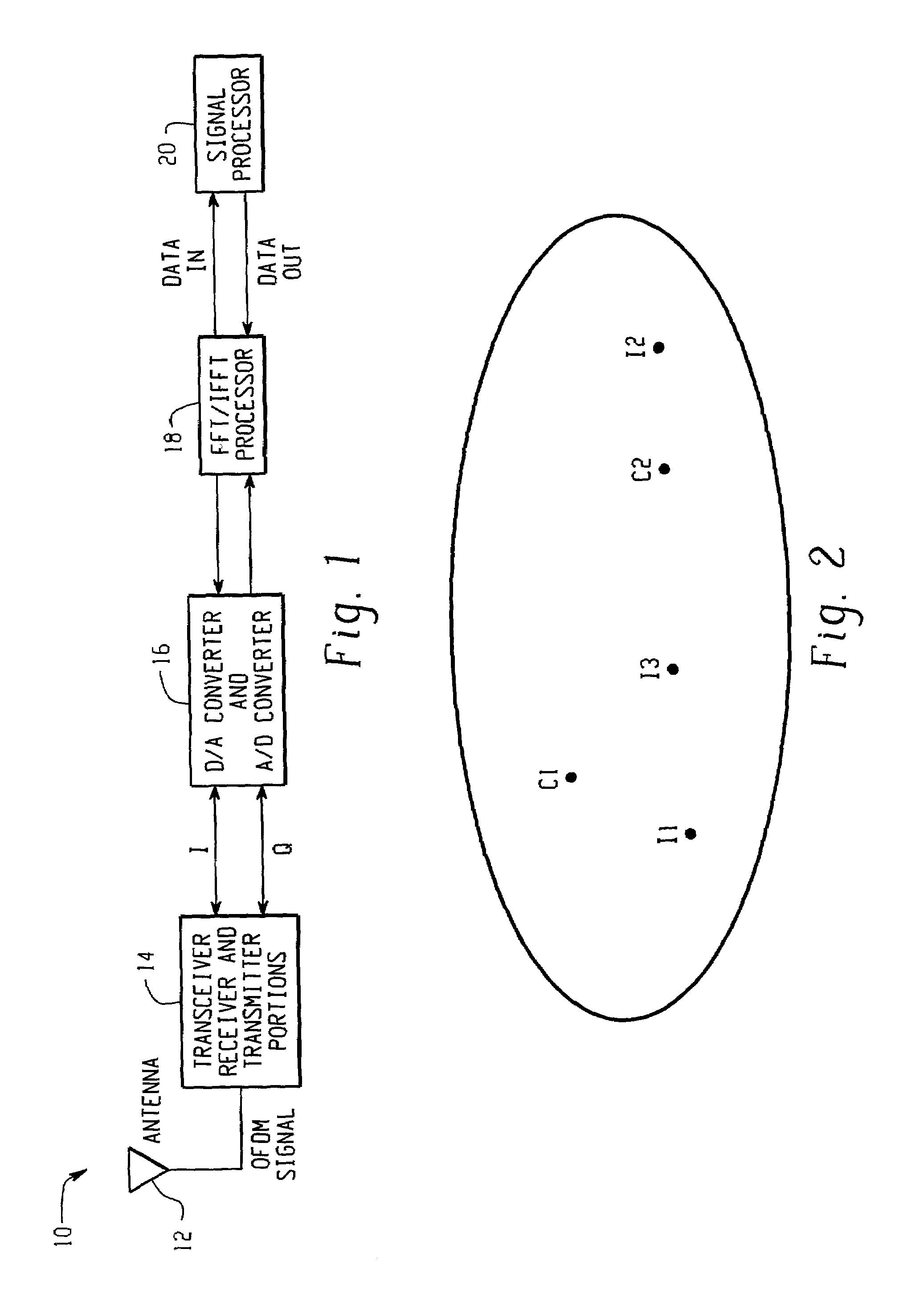Adaptive control system for interference rejections in a wireless communications system
a wireless communication system and control system technology, applied in the direction of payload allocation, digital transmission, transmission path sub-channel allocation, etc., can solve the problems of interference signals, especially acute interference problems, and corrupted desired signals, so as to improve data throughput, improve interference rejection, and improve robustness
- Summary
- Abstract
- Description
- Claims
- Application Information
AI Technical Summary
Benefits of technology
Problems solved by technology
Method used
Image
Examples
Embodiment Construction
[0034]Referring now to the drawings wherein the showings are for the purposes of illustrating a preferred embodiment of the invention only and not for purposes of limiting same, FIG. 1 illustrates an exemplary hardware arrangement 10 for a wireless communications device using OFDM in connection the present invention. Hardware arrangement 10 is generally comprised of an antenna 12, a transceiver 14, an analog-to-digital (A / D) and digital-to-analog (D / A) converters 16, a Fast Fourier Transform / Inverse Fast Fourier Transform (FFT / IFFT) processor 18, and signal processor 20. Antenna 12 receives RF energy for the receiver portion of transceiver 14 and transmits RF energy for transmitter portion of transceiver 14. Transceiver 14 includes a receiver portion and a transmitter portion. Transceiver 14 also converts the OFDM signal from the transmit or receive carrier frequency down to a lower intermediate frequency or to baseband. The D / A converter converts data being transmitted from digital...
PUM
 Login to View More
Login to View More Abstract
Description
Claims
Application Information
 Login to View More
Login to View More - R&D
- Intellectual Property
- Life Sciences
- Materials
- Tech Scout
- Unparalleled Data Quality
- Higher Quality Content
- 60% Fewer Hallucinations
Browse by: Latest US Patents, China's latest patents, Technical Efficacy Thesaurus, Application Domain, Technology Topic, Popular Technical Reports.
© 2025 PatSnap. All rights reserved.Legal|Privacy policy|Modern Slavery Act Transparency Statement|Sitemap|About US| Contact US: help@patsnap.com



